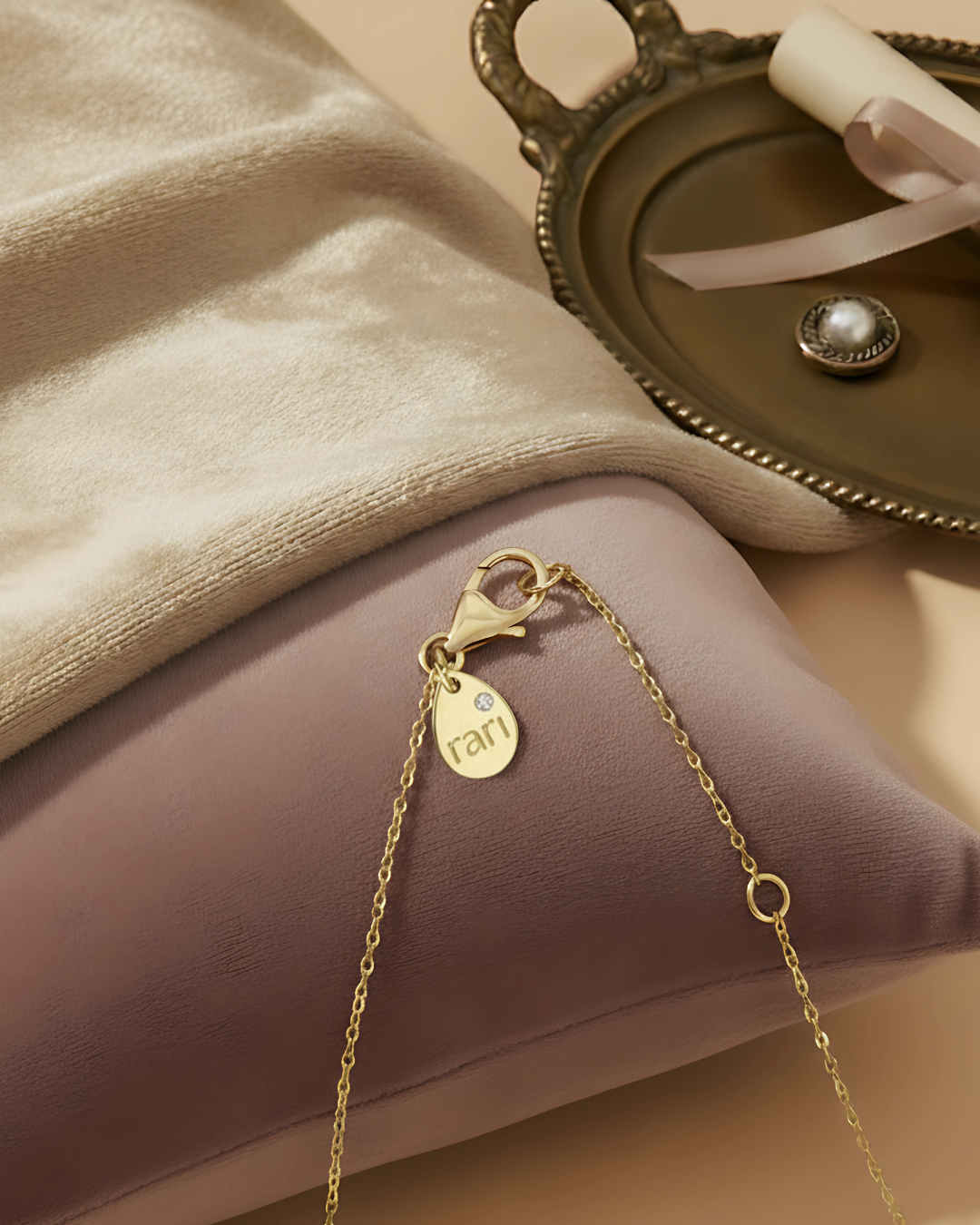When you buy fine jewelry, you’ll often notice tiny marks or numbers engraved inside a ring band, near a clasp, or on the back of an earring. These are called hallmarks or stamps, and they tell you valuable information about your piece — including gold purity, authenticity, and sometimes even where it was made.
In this guide, we’ll break down the most common gold jewelry stamps so you can shop with confidence and know exactly what your jewelry is made of.
What Are Hallmarks?
A hallmark is an official mark stamped on jewelry or precious metals to indicate purity, quality, and sometimes origin.
In the U.S., hallmarks are often simplified to karat stamps (like 10K, 14K, 18K) or millesimal fineness numbers (417, 585, 750).
In other countries, such as the U.K. or Europe, hallmarks may include symbols from official assay offices that test and verify the gold before stamping.
Common Gold Stamps and What They Mean
Here are the most common hallmarks you’ll find on fine jewelry:
-
10K / 417 → 41.7% pure gold (common in the U.S., durable, affordable).
-
14K / 585 → 58.5% pure gold (most popular karat in the U.S.).
-
18K / 750 → 75% pure gold (richer color, more premium).
-
24K / 999 → 99.9% pure gold (soft, rarely used in jewelry).
-
375 (9K) → 37.5% pure gold (common in the U.K. and Ireland, not standard in the U.S.).
Other stamps you might see:
-
“GF” = Gold Filled (layer of gold bonded to base metal).
-
“GP” = Gold Plated (thin layer of gold on base metal).
-
“925” = Sterling silver (often seen on vermeil jewelry, where silver is plated with gold).
Why Do Hallmarks Matter?
Hallmarks are important because they:
-
Guarantee authenticity — help you know your piece is truly gold.
-
Reveal purity — you’ll know how much real gold is in your jewelry.
-
Help with value — higher karats generally mean higher value.
-
Build trust — especially when buying from new or online brands.
Hallmarks in the U.S. vs Other Countries
-
United States: Jewelry must meet a minimum standard of 10K to be legally marketed as gold. Hallmarks are usually simple (10K, 14K, etc.).
-
United Kingdom / Ireland: The minimum is 9K, and hallmarking is stricter — pieces are tested at an assay office before being stamped.
-
Europe: You’ll often see three-digit fineness numbers (e.g., 585 for 14K).
This is why you might see 9K gold jewelry in Europe but rarely in the U.S.
Where to Find Stamps on Jewelry
If you’re inspecting a piece of jewelry, here’s where to look for hallmarks:
-
Rings: Inside the band.
-
Necklaces & Bracelets: Near the clasp.
-
Earrings: On the back of the post or inside the hoop.
-
Charms/Pendants: On the back or near the bail.
Use a jeweler’s loupe or magnifying glass to spot tiny marks.
Can Stamps Be Faked?
Yes — some counterfeit jewelry may be stamped with “14K” or “18K” even if it’s not real. That’s why hallmarks alone shouldn’t be your only trust factor.
Tips to stay safe:
-
Buy from reputable jewelers who provide certifications.
-
Ask for a gold authenticity report (from labs like BIS, GIA, or other recognized testers).
-
Look for brands that offer warranties and transparency.
FAQs About Hallmarks & Stamps
Does all gold jewelry have a stamp?
Most fine gold jewelry does, but very thin pieces or vintage jewelry may lack marks.
What does “375” mean on gold?
It means 9K gold (37.5% pure), common in Europe but not legally “gold” in the U.S.
Can I trust a 10K stamp?
Yes, but always buy from trusted sellers and request documentation for high-value pieces.
What if my jewelry has no stamp?
It could still be gold, but you’ll need professional testing to confirm.
Final Thoughts
Hallmarks and stamps are your jewelry’s signature of authenticity. They tell you purity, quality, and give you confidence in your investment.
At Rari, every piece comes with a clear gold stamp and warranty, because we believe in solid gold always — jewelry designed to last forever.

